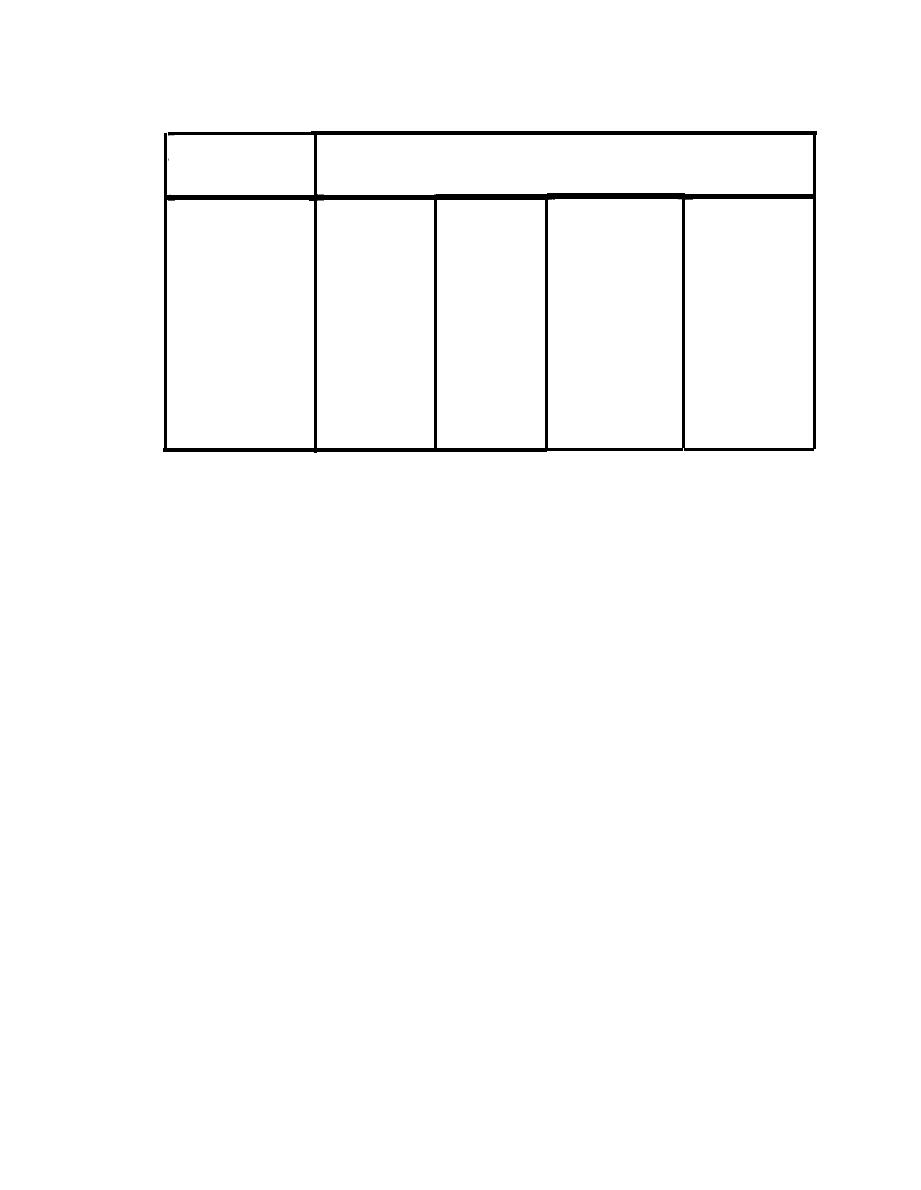
TM 5-805-4/AFJMAN 32-1090
Table 2-2. Speech Interference Levels (SIL) That Permit Barely Acceptable Speech Intelligibility at the Distances and Voice
Levels Shown.
Voice Level
Distance
Very Loud
Normal
Raised
Shouting
(ft.)
86
80
74
1/2
92
80
68
86
1
74
62
80
2
68
74
68
4
62
74
56
6
65
71
53
59
62
8
68
50
56
48
60
66
10
54
46
64
12
58
52
44
62
16
56
50
SIL is arithmetic average of noise levels in the 500-, 1000-, and 2000-Hz
octave frequency bands. SIL values apply for average male voices (reduce
values 5 dR for female voice), with speaker and listener facing each
other, using unexpected work material. SIL values may be increased 5 dB
when familiar material is spoken. Distances assume no nearby reflecting
surface to aid the speech sounds.
vibration (standing, seated, through the finger
arrangements should be made with the owners of
tips). The lower portion of the "barely perceptible"
the exposed structure. Even with a vibration level
range is most applicable to commercial installa-
of 1.0 in/sec superficial damage may occur in
tions. Complaints of building vibration in residen-
isolated instances. Superficial damage can consist
tial situations can arise even if the vibration
of small cracking in brittle facades such as plaster.
levels are slightly below the lower portion of the
In order to ensure that the possibility of superfi-
"barely perceptible" range. The choice of a vibra-
cial damage is minimized a vibration criteria of
tion criteria, for annoyance due to feelable vibra-
0.2 in/sec has been recommended. And finally for
tion, will be determined by the usage of the space
very old structures an even lower level of 0.05
and the perceived sensitivity of the occupants.
in/sec is recommended. The manner in which the
There should not be a problem with perceptible
level is to be determined is a function of the type
vibration if the levels are 6 to 8 dB below the
of vibration expected or experienced. For continu-
"barely perceptible" range of figure 2-3.
ous vibration the RMS level should be used. For
b. Vibration Criteria for Building Structures.
impulsive vibration the Peak value is to be used.
High amplitude vibration levels can cause damage
See appendix B for a discussion of Peak and RMS
to building structures and components. When vi-
vibration. On figure 2-4 the vibration limits men-
bration is destructive to building component the
tioned above have been plotted in terms of acceler-
vibration will be highly perceptible to the building
ation level in dB re 1 micro G.
c. Vibration Criteria for Sensitive Equipment.
occupants. A structural vibration velocity of 2.0
in/sec has commonly been used as an upper safe
Building vibration may be disturbing to the use or
limit for building structures, and vibrations above
proper operation of vibration-sensitive equipment,
this value will have adverse environmental im-
such as electron microscopes and other special
pact. A vibration velocity of 1.0 in/sec be used as a
chemical, medical, or industrial instruments or
normally safe vibration upper limit with respect to
processes. Figure 2-5 shows vibration criteria for
structural damage. Vibrations with a velocity level
some sensitive equipment types. To achieve these
greater than 1.0 in/sec should be avoided or special
low level vibration levels special building construc-
2-5


 Previous Page
Previous Page
